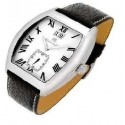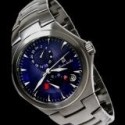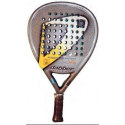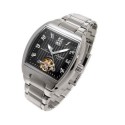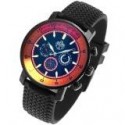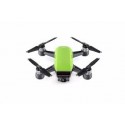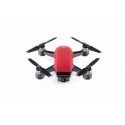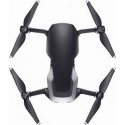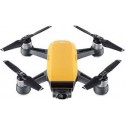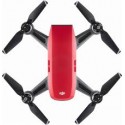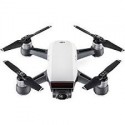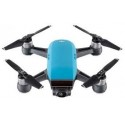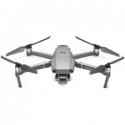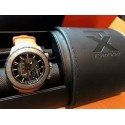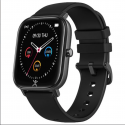Ningún producto
Estos precios se entienden IVA incluído
Producto añadido correctamente a su carrito de la compra
Hay 0 artículos en su carrito. Hay 1 artículo en su cesta.
Reloj Duboule Broughshane Automatico Cristal Zafiro
Precios Especiales para Proyectos de Volumen, Favor de Verificar Precios y Existencias previo a su compra * Precios con IVA y Garantía en Mexico Directo con Fabricantes.
Reloj Duboule Broughshane Automatico Cristal Zafiro
Product Description:
Features and Benefits
Duboule Gents Broughshane Automatic
Flyback Date Stainless Steel Tank/Blue Dial
This innovative timepiece from Duboule is not only a
nod towards wonderful craftsmanship, but also the
amazing advances in timekeeping techniques.
Among the features of the ‘Broughshane’, you can see that
the typical date window for many other watches isn’t present;
instead the upper half of the dial is consumed by a smooth half-arc
of numbers running left to right from ‘1’ to ‘31’. To further delight your
senses, you’ll see that after the red-tipped indicator hits ‘31’,
it flies back from right to left back to ‘1’ for the next month to begin.
Let’s not forget the elegantly curved stainless steel tank or the polished
bracelet either, as they make this timepiece all the more pristine to
go along with your impeccable sense of style.
-- Movement --
Automatic TY-2711 movement w/ 20 jewels
-- Dial --
Luminous hands
Flyback date indicator
Combination subsidiary seconds & day dial at 6 o’clock
Exhibition back w/ decorated Côtes de Genève bridges & rotor
-- Case --
Screw-down case back
Water resistance up to 3 ATM
35mm x 51mm x 15mm stainless steel case
-- Band --
D198mm x 20mm stainless steel braceletouble-clasped diver’s buckle
For more information, we invite you to visit:
By the late 16th century master watchmakers were distinguished by
their diversity and pure imagination; the sky was the limit for style
and function alike. Timepieces were often made inside of pendants
and charms shaped into everything from human skulls to various
animals like dogs, rabbits, and even fish. The more obscure the piece,
the better. As the complexity of timepieces matured, the distinction
between watches and other types of jewelry became more defined.
Actually, many early watchmakers were also goldsmiths and engravers
and yet many of these craftsmen did not sign their work. It wasn’t until
the early 17th century when watches first became true collectors items
that they required engravings of the creator’s name.
Then a jeweler and watchmaker by the name of Martin Duboule
took signing to the next level when he added the phrase, “à Genève”
underneath his name. This revolutionary decision was first presented
on a skull watch made circa 1620. Martin was also known in his trade
as a lapidary (precious stone engraver). This ability was well
recognized when he created the earliest known Geneva watch
decorated with champlevé enamel that now resides in Paris’
Cluny museum.
Throughout the early 1600’s Martin Duboule took on apprentices such as
Abraham Patru, Jean Brendon, and Charles Arbalestrier not only to
teach them about making watches but also about engraving. In the end,
one of his most prolific students turned out to be his own son, Jean-Baptiste.
Jean-Baptiste Duboule soon became a master watchmaker and
engraver in his own right. The astronomical fusee watch he made ca.
1680 now resides in the British museum and is claimed to be the
finest piece ever made for its time. This masterpiece goes so far as
to include separate dials for the day of the week (represented by
the moon, sun, and the 5 known planets at the time: Mars, Mercury,
Jupiter, Venus, and Saturn), moon phase, day & night, the four
seasons, and the month with corresponding sign of the zodiac.
All of these functions are placed within a finely engraved perforated
case so that the tiny bells inside could be heard when they chimed
at the top of the hour. Its creator even went so far as to engrave
every gear and winding mechanism inside that furthermore
accentuates its exquisite beauty.
jean-Baptiste would also gain recognition for watches created with
hand painted interior and exterior designs. His father made sure
that he received a secondary apprenticeship in 1629 with Marc
Grangier, a watchmaker and painter from Châtellerault. Many
timepieces of the day were created with metallic oxide paints upon
a white enamel bb. The subject matter of these miniature
paintings was just about as diverse as the cases and some were
even portraits of the watch’s owner. Jean-Baptiste, in particular,
would often go so far as to explore multiple enamel techniques
on the same piece.
Jean-Baptiste Duboule also would go on to revolutionize the
fusee watch design. By the mid-17th century, watches operated
with a mainspring made of either a length of catgut or chain.
This spring, after the watch had been fully wound, will slowly
wrap around a conical spiral as the timekeeper runs during
the course of the day. Around 1660, there was a great deal of
concern that the chain would not settle properly within the
grooves of the fusee spiral. By recontouring the groove,
Jean-Baptiste made sure that the fusee chain wouldn’t come
loose through the normal wear and tear of the watch.
It is due to both father and son’s immeasurable talents and
contributions to the watchmaking world that we pay tribute.
The plethora of beautiful timepieces that make up the Duboule
collection are made with a perfect balance of precise
craftsmanship and refined presence. So join us as we
remember the brilliant watches of the past with these
incredible timepieces of today.
| F_ClaveProdServ | 54111501 |
| F_ClaveUnidad | H87 |
| F_Unidad | Pieza |
29 otros productos de la misma categoría:
Deportes / Juegos / Gadgets / Relojes
- Destacados / Populares
- Ofertas Inventario W.T.C.
- CompuSales 360 Marketing Digital
- CompuSales 360 TIC / Arrendamiento
- Colaboración y Videoconferencia
- Cómputo Desktops / AIO / Touch / WS
- Computo Laptops / Notebooks
- Cómputo Mini PCs / Barebones / Thin Clients
- Cómputo Uso Rudo / Terminales
- Controladores de Video
- Deportes / Juegos / Gadgets / Relojes
- Equipo Medico / Sector Salud
- Electrodomésticos Finos
- Energia UPS / No-Break
- Fotografía / Vídeo
- Impresoras / Multifuncionales MFC
- Impresoras de ID Credenciales
- Monitores LCD / LED / Touch
- Monitores Gran Formato / Touch
- Monitores Benq Gran Formato
- Monitores LG Gran Formato
- Monitores Nec Gran Formato
- Monitores Panasonic Gran Formato
- Monitores Samsung Gran Formato
- Monitores Sharp Gran Formato
- Monitores Viewsonic Gran Formato
- Monitores Touch Benq Gran Formato
- Monitores Touch Elo Gran Formato
- Monitores Touch Sharp Gran Formato
- Monitores Touch Smart Technologies
- Monitores Touch Viewsonic Gran Formato
- Monitores NEC Touch Gran Formato
- Otros / Accesorios
- Pantallas Interactivas Touch
- Plotters / Copiadoras
- POS / Punto de Venta / AIO Touch
- Proyectores Laser / LCD / DLP
- Redes / Switches / VoIP
- Servidores / Storage / Data Center
- Scanners / Escaners / Digitalizacion
- Software Empresarial
- Tablets / Tabletas
- TV / Pantallas Hoteleras
- TV / Pantallas LED LCD
Fabricantes
- Acer
- Adobe
- AOC
- APC
- Apple
- Asus
- Avision
- Barco
- BenQ
- Bixolon
- Brother
- Buffalo
- Canon
- Cisco
- Citizen
- Complet
- CyberPower
- D-Link
- Da-Lite
- Dabber
- Datalogic
- Dataproducts
- DELL
- DJI
- Durabook
- Eaton
- EC Line
- Elo Touch
- Epson
- Ergotron
- Fortinet
- Fujitsu
- Getac
- Ghia
- GoPro
- Graphtec
- Hisense
- Honeywell
- HP
- HPE
- Huawei
- Infocus
- Intel
- Intermec
- ISB Sola Basic
- Jabra
- Kingston
- Koblenz
- Kodak Alaris
- Kyocera
- Lacie-Segate
- Lanix
- Lenovo
- Lexmark
- LG
- Logitech
- Microsoft
- MiniClean
- Motorola
- Nec
- OneScreen
- Optoma
- Otros Compusales
- Paloalto Networks
- Panasonic
- Perfect Choice
- Poly
- Posiflex
- Samsung
- Scotsman
- Sharp
- Smart Technologies
- Sony
- StarTech
- Sub-Zero
- Thermador
- Toughbook Panasonic
- Tripp-lite
- Vertive
- Vica
- Viewsonic
- VMware
- Vorago
- Wacom
- Wolf
- Xerox
- Zebra
- Zotac





